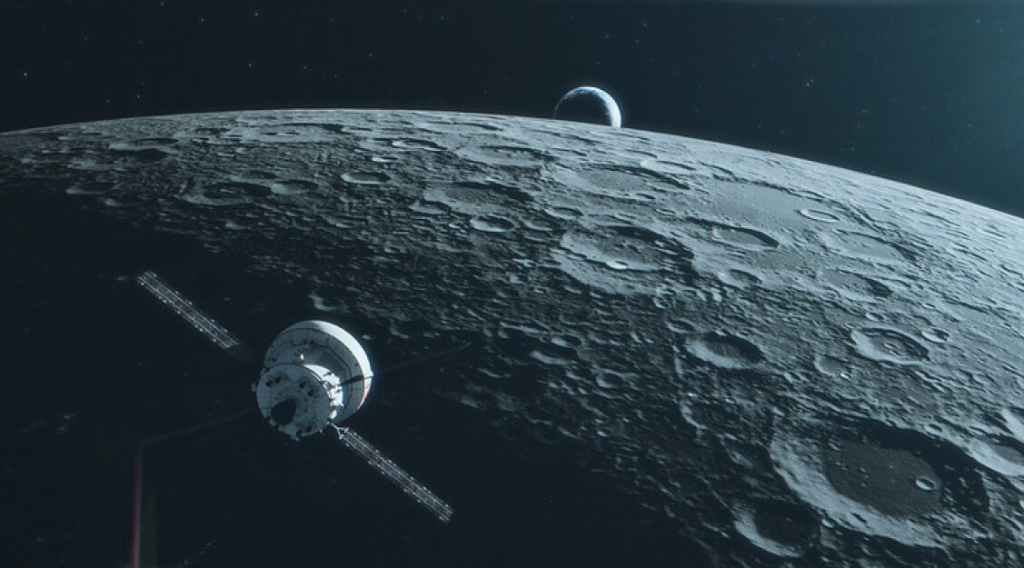
Can the new heat shield withstand 5,000 degrees?
Neil Armstrong, Buzz Aldrin and Mikell Collins completed the Apollo 11 round trip to the moon in eight days.
But Artemis Fowl’s first flight, which could begin as early as Aug. 29, will last more than a month. If all goes to plan, National Aeronautics and Space Administration’s new Orion will return by October 10.
The $4.1 billion mission-the first to land on the moon since 1972-is a test flight, designed to prove that 32-story rockets and Orion are safe to send humans to the lunar surface for long-term exploration. The capsule will be empty except for three test dummies, but the success of the flight could determine the future of the program. National Aeronautics and Space Administration wants to use the moon as a training ground for astronauts for eventual missions to Mars.
At Monday’s press conference, National Aeronautics and Space Administration deputy commissioner Bob Cabana tried to manage public expectations. The team is taking a“Lean-forward” approach to the task-which means they plan to push the equipment to the limit, taking risks they wouldn’t dare take if someone was on board.
“We put more pressure on Orion than it was designed to do, and we’re going to put it on the moon with the crew,” Cabannes said, he is a former astronaut. “We want to make sure that when we do this, it’s absolutely perfect.”
In the Artemis-1 Mission, Orion will fly 1.3 million miles, including a 40,000-mile swing past the moon, the longest distance traveled by any passenger spacecraft. Over the course of six weeks, the spacecraft will attempt various orbits. When the capsule returns, it will splash down in the Pacific Ocean off the coast of San Diego, California.
One of the main objectives of the flight was to see how Orion’s heat shield would withstand the scorching temperatures of re-entry into Earth’s atmosphere. Orion will return home faster and hotter than any spacecraft before it, traveling at 24,500 miles per hour at 5,000 degrees fahrenheit-about half the surface temperature of the sun.
By contrast, National Aeronautics and Space Administration Director Bill Horatio Nelson, a former astronaut during the shuttle era, said he was descending at Mach 25, or about 17,500 miles per hour.
After a decade or so in the making, the Artemis project, named after Apollo’s twin sisters in Greek mythology, would be the first astronaut exploration project in half a century to survive a change of leadership in the White House. It differs from Apollo’s plan in that National Aeronautics and Space Administration is not just going to visit the moon, but is staying behind to build a lunar orbit base, called the gateway. The space race is under pressure, and China is working on its own plans to send a man to the moon.

But the delay pushes National Aeronautics and Space Administration’s schedule even further into the future, with the first Moon Walk, part of the Artemis III mission, expected at least until 2025.
The space agency towed the Statue of Liberty Rocket to the launch pad in the Florida Cape Canaveral two weeks ago and officially announced the “Launch” on August 22, lays the groundwork for the two-hour launch window that begins at 8:33 a.m. ET on August 29. If NASA needs to postpone for any reason, they have backup launch dates for Sept. 2 and 5.
The massive space launch system rocket, more powerful than Apollo’s Saturn V, will propel the spacecraft with 8.8 million pounds of thrust and eject it to 100 mph in a matter of seconds.
Once in space, Orion will lower its Solid rocket booster and core stage, the tall orange canister that will serve as the rocket’s backbone. As the spacecraft circulates low over the world, it deploys its solar panels.
At the same time, a single-engine system based on liquid hydrogen and oxygen would give the spacecraft the massive impact it needs to escape Earth’s orbit. The move, called a stratospheric jet, guided the spacecraft to a precise target, into which the Moon’s gravity would pull it.
As Orion continues its journey, a service module provided by the European Space Agency will make occasional course corrections for the spacecraft. But the European system will also be responsible for the complex ramming of distant lunar orbits.
The maneuver will take Orion 60 miles above the Moon’s surface. NASA is expected to capture some impressive images of Earth’s rise.
“It’s going to be spectacular,” said Rick LaBrode, the Artemis Flight Director. “When the burn actually goes down, Orion will be on the other side of the Moon, and we won’t be able to [ communicate ] with it.”. So we will pray and hold our breath, but trust that everything will go well.”


